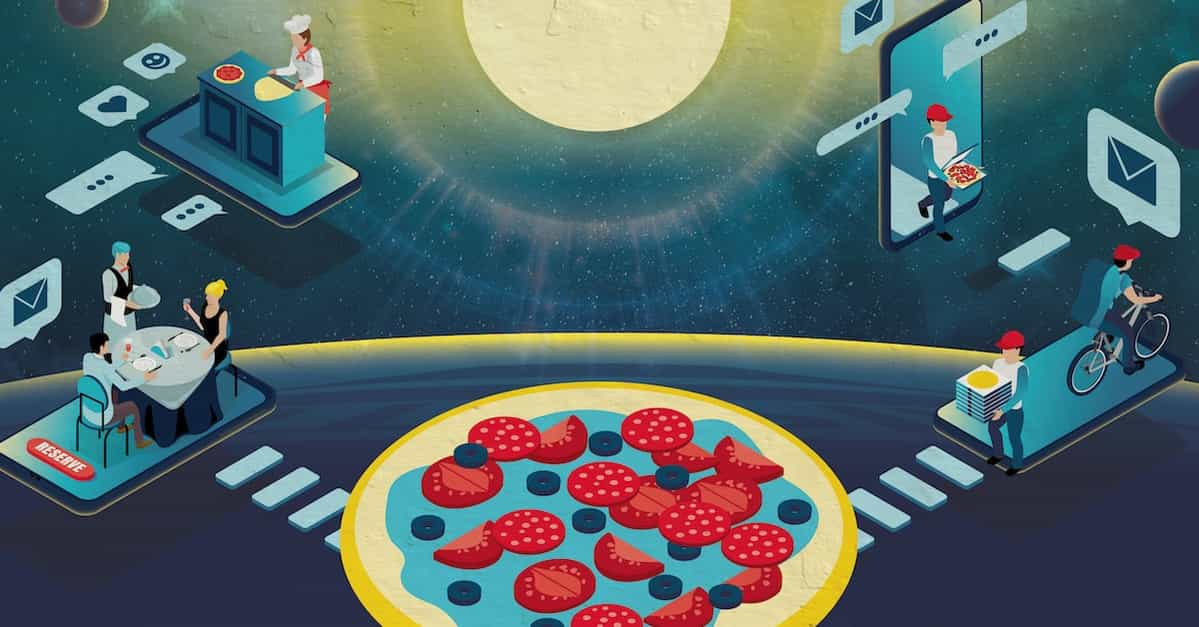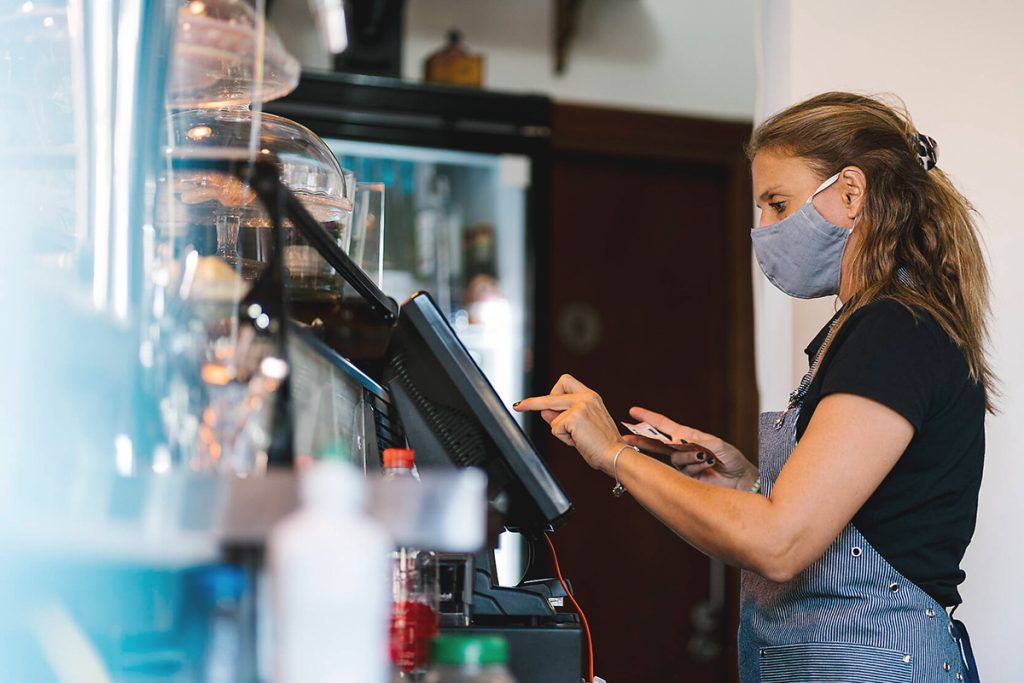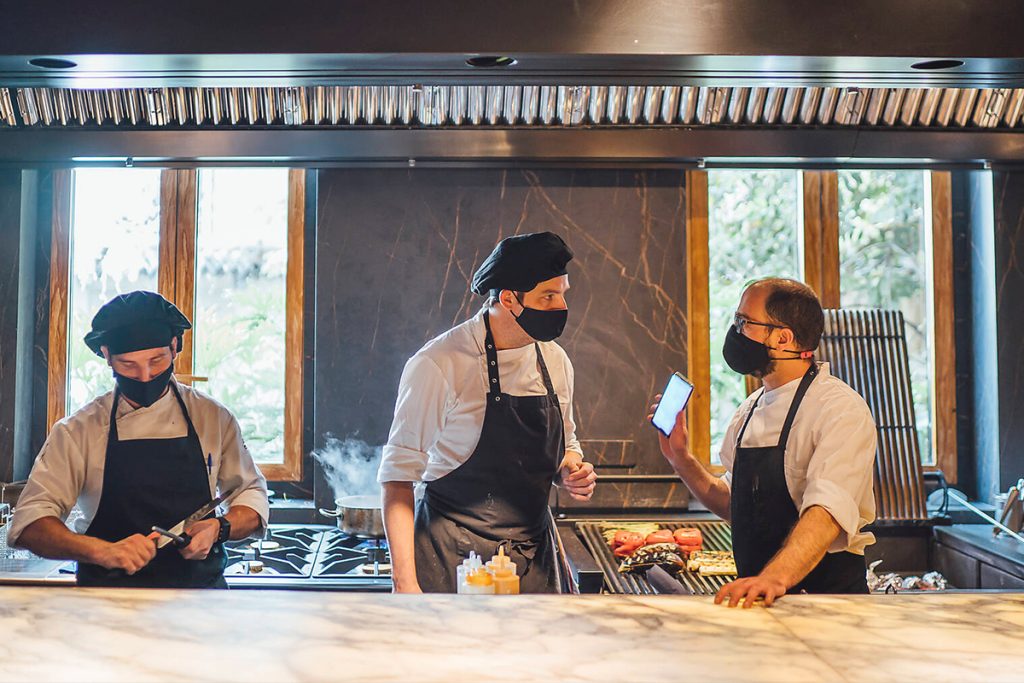Hospitality Trends 2022: Looking Into the Future
From sustainability to Ghost Kitchen: Discover the 7 hospitality industry trends that experts expect to see in 2022.
Digital employees are a very relevant topic – also in the hospitality industry. Find out how to tackle this issue in your business.

Across all industries, we see an ever-increasing focus on building a digital workforce. The goal is to achieve higher productivity by automating time-consuming work tasks, but also – and this is often underestimated – to become a more relevant employer.
To me, a digital workforce doesn't mean that all employees only work on their laptops, tablets or phones and never communicate or interact in person like real people. Rather to me, it's an approach where the company understands how digital tools can help leaders and employees be more productive. This allows managers to spend more time on what matters most, which is building and maintaining a genuine human relationship with employees and customers.
In this Utopia Gastronomica article, I would like to address these questions:
How digital are employees in the hospitality sector?
Why is it important for restaurants and hotels to have a digital workforce?
What solutions do the innovators in the industry offer?
As a business leader in the hospitality industry, what can you do to transition your workforce to be more digital in your business?

Many restaurants have invested heavily in digitalizing the customer experience. This ranges from marketing solutions to optimized processes, such as ordering food online or via app, or enabling guests to make online reservations. Digitalization of the customer experience is important because it can drive revenue growth and create a shift in brand perception.
For example, as you may have noticed, McDonald's changed its ordering system to create a better customer experience. Before the change, customers had to stand in line and order at the counter. Now the ordering process is handled at a digital kiosk. This features a touchscreen where customers can click through the menu. The food is prepared on demand and consequently is served to the customer as fresh as possible. This change in the ordering process has not only improved the customer experience, but also increased the quality, as well as the employee experience, which in turn has had a very positive impact on revenue.

I'd be bold and say that in the hospitality industry, the level of digitalization of the workforce and the willingness to work digitally is in the dark ages compared to other industries.
We notice this with our customers, who are still somewhat uncertain in this area. It also frequently happens that the implementation of digitalization is met with resistance from the staff. Many reasons are given as to why something doesn't work. It is often the case that the software is to blame and that this leads to errors. Employees resist new technology and cling to traditions. They don't want anything to change and sometimes view the whole project with skepticism.
Cooperative processes are required when implementing digital tools in the workplace. This means that employees must be involved in the implementation of digitalization. Not only once the decision has been made, but already at the beginning. It is definitely advisable to select one or two employees to discuss and implement the project with them from the very beginning. After all, the staff should then work with the tools on a daily basis. Often, management sees the benefits and wants to implement immediately, but excludes the staff in the process. The point is to work out the personal benefits of digitalization for each employee. This way, the staff not only see the individual added value of digital tools, for example in terms of making work easier or saving time, but also the benefit for the entire company.
The majority of restaurant businesses haven't even started the digital journey yet, and a small percentage are only in the early or developing stages. However, a few industry innovators have set out to change the way they manage workflows to create a competitive advantage.
Tech and digital solutions are being implemented to improve the employee experience through more efficient restaurant management systems, such as reservations, staff and scheduling, internal communications, training, or operations management. I often see that many restaurant managers still rely on spreadsheets, like Microsoft Excel, for operational checklists or for reservations. This is very time-consuming to maintain and often tends to slow down the process. In addition, it is usually not user-friendly, which is why it is no longer used after a certain period of time.

A major research project by the McKinsey Global Institute supports this. The 2015 study measured the degree of digitalization of U.S. companies from various sectors, including the restaurant and hotel industry. The report shows that this sector, unlike others, has a significantly low level of digitalization. This could be seen particularly in the use of digital tools in the workplace.
As mentioned earlier in this article, many leading operators have already made investments to improve the digital experience for customers. This results in more customers visiting their business. This all sounds great, but what if the operation is not ready to accommodate this growth? Or do these restaurants have the capacity or support systems in place for their employees to deliver on the promise to customers? Digital tools can help the business ensure that the right balance exists between a great customer experience and an excellent employee experience.
The Millennial generation includes individuals born between 1981 and 1996. They are most notable for their affinity for technology. So we all know that the Millennial group has high expectations of their jobs and the tools available to them. They want to work in companies that take their development seriously. At the same time, they want it to be a modern workplace with digital solutions similar to those they use as consumers.
Innovators haven't just spent a lot of money going digital. They don't chase trends, and they make sure that everything they do adds value to all levels of their business and to their customers. They started the digital journey by asking themselves what it takes to be great in every way, and what comes first. Above all, this includes a 360-degree view of the processes in the company. One tool alone will rarely be the savior. Rather, it is a matter of multiple tools interconnected with interfaces.
I have observed that innovators work methodically with the service-profit chain. According to this model, customer loyalty and satisfaction, employee productivity and satisfaction, and service quality are related to profits and growth. Profits and growth are stimulated primarily by customer loyalty. Customer loyalty is seen as a direct consequence of customer satisfaction. Satisfaction, in turn, is influenced by the utility value created by satisfied, productive and loyal employees. Finally, employee satisfaction results from promotional activities and a company policy. These enable employees to provide good service to customers.

Innovators have also made sure they have their operating foundations in place before implementing new digital tools – or were clear about what they wanted to achieve with digitalization in the short and long term. The goals to be achieved with digital tools must be defined in advance. The first step is to survey the current infrastructure and at the same time question whether it can continue to exist in its current form.
Business decision makers understand the importance of using technology for both their customers' and employees' experiences – we know that now. They use digital tools to better align their employees and make them more agile and productive. The tools are part of their operational DNA.
It is important to note that hospitality businesses are not adopting technology to reduce employees. Rather, they are using it to increase their speed and to support and relieve the workforce of more tedious work. In particular, this is the case with repetitive tasks that keep managers and employees from focusing on the customer experience or creating space for creativity.
They also use the tools and technologies to measure real-time intangible KPIs, such as employee satisfaction and productivity, training costs, turnover rates, or sick days and absences. They all have a direct impact on the overall performance of the restaurant.
When I work with restaurant, hotel, catering or community food service businesses that want to transition their workforce to be more digital, we go through several points to get the transformation started.
First, understand the gaps and core priorities in your organization when it comes to implementing digital solutions. Do this by making it a top management priority. It shouldn't just be seen as some project work delegated to HR, IT or Operations. This task should be a top priority for the CEO because we are basically talking about an organizational change in the company.

How digital are we in terms of workforce on a scale of 1-10?
What are our colleagues in the industry doing and what are they having success with?
How are employee and customer expectations changing?
What are the first three steps we can take to become a digital workforce?
Once the gaps and priorities are identified, you can design strategies for digital transformation. Remember that a digital strategy is not something that should stand alone. Rather, it should be an integrated part of the overall business strategy. Importantly, don't just start implementing digital tools without being sure that it makes sense for your employees, customers, or your overall operations. Simply starting is the wrong way to go in this case!
What is needed is a well-thought-out strategy, as well as a concrete implementation. The key to success in creating a digital workforce is that the people on the front lines are involved from the very beginning. After all, they are the ones who will bring digitalization to life in the workplace.
Technology is nothing. What's important is that you have faith in people, that they're basically good and smart — and if you give them tools, they'll do wonderful things with them
Technology is nothing. What's important is that you have faith in people, that they're basically good and smart – and if you give them tools, they'll do wonderful things with them.
Steve Jobs
For me, a digital employee is someone who can use digital tools efficiently. They understand the added value of digitalization for themselves, but also for the entire company. Using digital tools can help the employee manage tasks and be more productive. But it's not just about the digital employee being able to use the tools. It's also important that the head of an operation invests in the digital infrastructure, which in turn brings many benefits. This is because it can support employees in accomplishing tasks that they would otherwise not be able to do as easily without digital tools. In addition, attention should be paid to ensuring that digital tools work together and are interconnected.
It is also essential to approach implementation properly and consider it a top priority for managers. The head of an operation should ask themselves what they want to achieve through digitalization of their company. Only then it does make sense to come up with a strategy on how best to approach implementation. During this step, it is also advisable to look for a partner who is familiar with digitalization and knows what is needed. Likewise, executives should remember that this is a collaborative process that needs to involve staff, or at least a selection of staff.
I think the digital employee is a very exciting and, above all, an increasingly relevant topic. I am convinced that there will be a lot of development in this area and that new ideas will emerge. For example, I could well imagine visually representing companies based on their level of digitalization and the use of digital tools in the workplace. So the more digital a company is, the stronger and better its digital image. And a company becomes more digital the more systems are linked together. So the ideal picture would be a company, in which digital tools are used in all possible areas.
However, this is just an idea that I would personally find interesting. In any case, I'm already curious to see how the topic of the digital employee will develop.
So, what do you think about it?
From sustainability to Ghost Kitchen: Discover the 7 hospitality industry trends that experts expect to see in 2022.
From sustainability to culinary diversity: Discover the hospitality trends for 2024 and how you can already implement them in your business today.
Thomas Primus attended SXSW 2022 in the U.S. We talk to him about his impressions and what trends the event will bring for the hospitality industry.
Make sure you never miss out on updates and trends about digitalization in the hospitality industry by subscribing to our monthly newsletter. You will receive useful information delivered directly to your inbox.